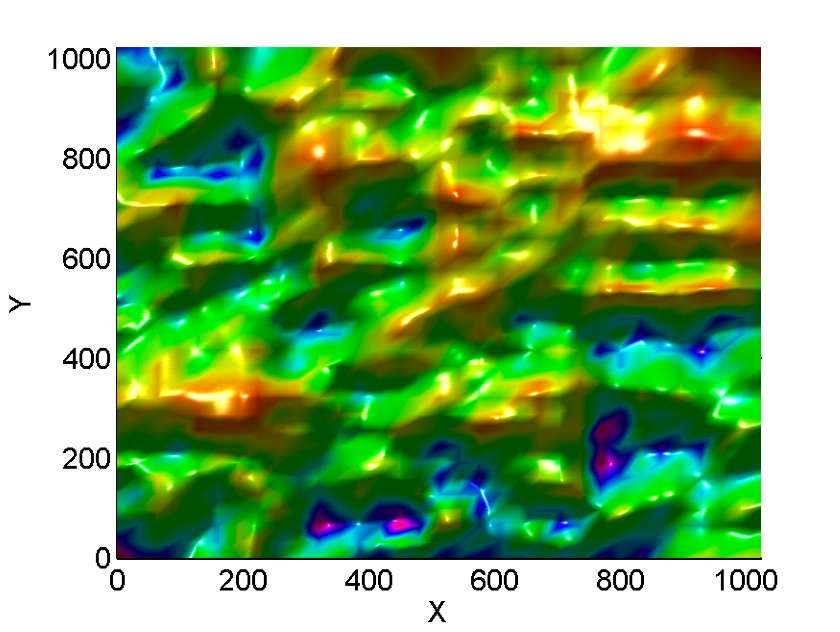Multiplicative cascade
In mathematics, a multiplicative cascade[1][2] is a fractal/multifractal distribution of points produced via an iterative and multiplicative random process.

Model I (left plot):
Model II (middle plot):
Model III (right plot):
The plots above are examples of multiplicative cascade multifractals. To create these distributions there are a few steps to take. Firstly, we must create a lattice of points which will be our underlying probability density field. Then we will populate this lattice with randomly placed points, insisting that the probability that the points be placed are proportional to the cell probability.
The fractal is constructed as follows: The space is split into four equal parts. Each part is then assigned a probability from the set without replacement, where . Each subspace is then divided again and assigned probabilities randomly from the same set and this is continued to the Nth level.
At the Nth level the probability of a cell being occupied is the product of the cell's pi and its parents and ancestors up to level 1 i.e. all the cells above it. In constructing this model down to level 8 we produce a 48 array of cells each with its own probability. To then place particle in the space we invoke a Monte Carlo rejection scheme. Choosing x and y coordinates randomly we simply test if a random number between 0 and 1 is less or greater than the cell probability. To produce the plots above we dust the probability density field with 5,000 points in a space of 256 × 256.
An example of the probability density field:

The fractals are generally not scale-invariant and therefore cannot be considered standard fractals. They can however be considered multifractals. The Rényi (generalized) dimensions can be theoretically predicted. It can be shown [3] that as ,
where N is the level of the grid refinement and,
References
- ↑ Meakin, Paul (September 1987). "Diffusion-limited aggregation on multifractal lattices: A model for fluid-fluid displacement in porous media". Physical Review A. 36 (6): 2833–2837. doi:10.1103/PhysRevA.36.2833. PMID 9899187.
- ↑ Cristano G. Sabiu, Luis Teodoro, Martin Hendry, arXiv:0803.3212v1 Resolving the universe with multifractals
- ↑ Martinez et al. ApJ 357 50M "Clustering Paradigms and Multifractal Measures"
See also
| Wikimedia Commons has media related to fractals. |